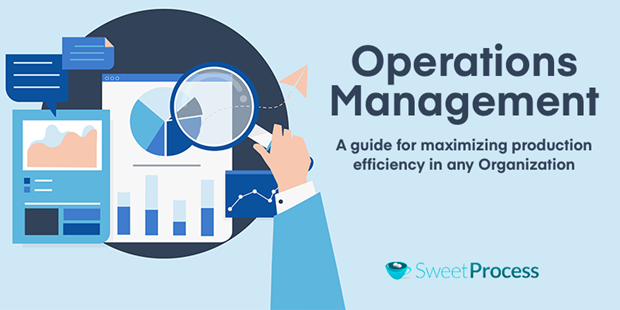Table Of Content

So far we’ve concentrated on the designer, but the designer needs insights too. Some orgs are small enough to allow designers to do their own research and validation, but as larger-sized organizations scale, research operations need to develop for the entire product organization. While supporting the designer with these operations, we also start to support communities within the organization. When the operations that initially only impacted a designer start to affect other teams, our initial image of a designer gets another layer. From the moment the designer is engaged in a hiring process, onboarding system, and day-to-day environment, this initial layer of processes becomes a primary responsibility of the operations organization. Some are more centralized, whereas others might have more atomic teams with a dedicated DesignOps person in each team.
How to figure out whether you need a DesignOps team
Software programs or UX Design and Prototyping tools are required for the design and development process. It lets designers visualize their ideas, collaborate with team members, and effectively communicate design concepts. These allow designers to create graphic designs, mockups, and interactive prototypes, including online and app design. Design Operations (DesignOps) relies on a variety of tools to streamline processes, improve collaboration, and ensure efficient design workflows. Define key performance indicators (KPIs) to measure and track the success of workflow improvements. Metrics can include project stakeholder satisfaction, completion times, and design quality.
What are the benefits of design ops?
Get to know the people, space, processes, etc.,–in group and one-on-one environments. To help give better insight into what design operations is, this article outlines what I personally view it as and the elements I believe are required to do it well. Discover transformative insights to level up your software development decisions. Spot opportunities and challenges for increasing the impact of design systems and DesignOps in enterprises. It consists of a set of components that comply with clearly established principles and patterns. DLS enables all employees to use a shared vocabulary understood by all departments within the organization.
Putting design ops into practice
For DesignOps to operate, a person needs to be assigned as the leader of the team, also known as the DesignOps Manager or Director. Your organization’s size and complexity will determine the strength of the DesignOps team. Generally, roles include workflow specialists, documentation experts, or communication facilitators. If your design projects involve cross-functional collaboration, from multiple design stages to convincing stakeholders, DesignOps will help streamline these processes.
It ensures that DesignOps doesn’t fall the priority list as the team is chasing their deadlines and other commitments. Standardized processes, design systems, and best practices help ensure consistency across products and features delivered by the team. It also leads to improved scalability and can help you avoid many troubles that come with a rapidly growing headcount. At some point the Head of Design who originated as that initial design hire is faced with an operational role of managing 20 to 30 people.
Author Services
Penn Honors KoningEizenberg Architecture, James Corner Field Operations, and Students with Awards - ARCHITECT Magazine
Penn Honors KoningEizenberg Architecture, James Corner Field Operations, and Students with Awards.
Posted: Wed, 16 Aug 2023 19:32:48 GMT [source]
Operationally, decision making around design tools and processes need to be understood by a design leader rather than an IT department. Without DesignOps, cross-department collaboration is left to unstructured, meandering communication that only hinders output and efficiency. To leverage design systems for BBVA, Pilar notes they’re building BBVA Experience as a suite of products including project intake and discovery tools, brand assets, design resources, engineering resources, and the UI Studio. As a cost savings tool, the UI Studio provides standardized, reusable components, substantially reducing the time and effort to launch products to market. In reality, design-team challenges are vast, so there are many potential focus areas for DesignOps practices.
We heard from our community that professional development is valued more than anything else. We also learned from our research efforts that there are some non-design specific competency gaps that designers would need to close to best position themselves to advance their careers and the overall profession. AIGA is here to help with the launch of a new pilot program that offers courses for the creative professional.
He goes on to point out that operations generally include the tools and infrastructure required to complete an activity while reducing friction and increasing the quality. In another article, I talked about the difference between an artist and a designer. Working as a service designer you always walk the tightrope between creativity and usability.
This broad landscape of possible starting points can be overwhelming for teams seeking to invest in DesignOps for the first time. Creating a menu of services can also help key stakeholders better understand what your team can and can’t do. Once you come up with a service menu, post it to your company’s intranet or email a copy to all stakeholders who use your design team’s services.
It will require influencing management to gain resources over time by demonstrating achieved goals. New teams are hired to help with these operations, and new people mean there are new roles to consider, and designers in the organization will also need to adapt to new additions. This is why a workable, scalable toolkit makes up one of those layers that wraps the designer in the center of our graph. To scale your team in a way that allows designers to worry less about their environment, you’ll have to look a bit beyond the traditional org chart of a design team.
Standardization of processes will ensure that everyone follows the same procedures, which will lead to enhanced quality and greater efficiency in design work. Now that we’ve discussed the significance of Design Operations, let’s look at the fundamental roles that drive successful design projects. As we’ve previously written, the shape of a DesignOps practice can and should look very different from one organization to the next. There are a lot of components within DesignOps, and what an organization chooses to select — or to pass on — should depend on the current needs and most poignant pain points of that organization. It follows, then, that there are many perceived values of DesignOps, depending on what problems a design team or organization is focused on solving, as reflected in the research.

Before implementing an operational strategy, you’ll need to consider it within the context of your overarching business mission. It also includes training new team members planning, and tracking results using key performance indicators (KPIs). In a design org, the design program manager looks for ways to improve the team’s output and ability to contribute to organizational success. DesignOps is a burgeoning area of design practice that requires designers to be effective managers of people, processes, and projects. This certificate provides you with the essential courses needed to nurture and manage your creative teams and ensure projects are run smoothly and effectively. Design Operations (DesignOps) plays a crucial role in assessing and optimizing the design workflows, improving collaboration, and ensuring design teams work efficiently.

No comments:
Post a Comment